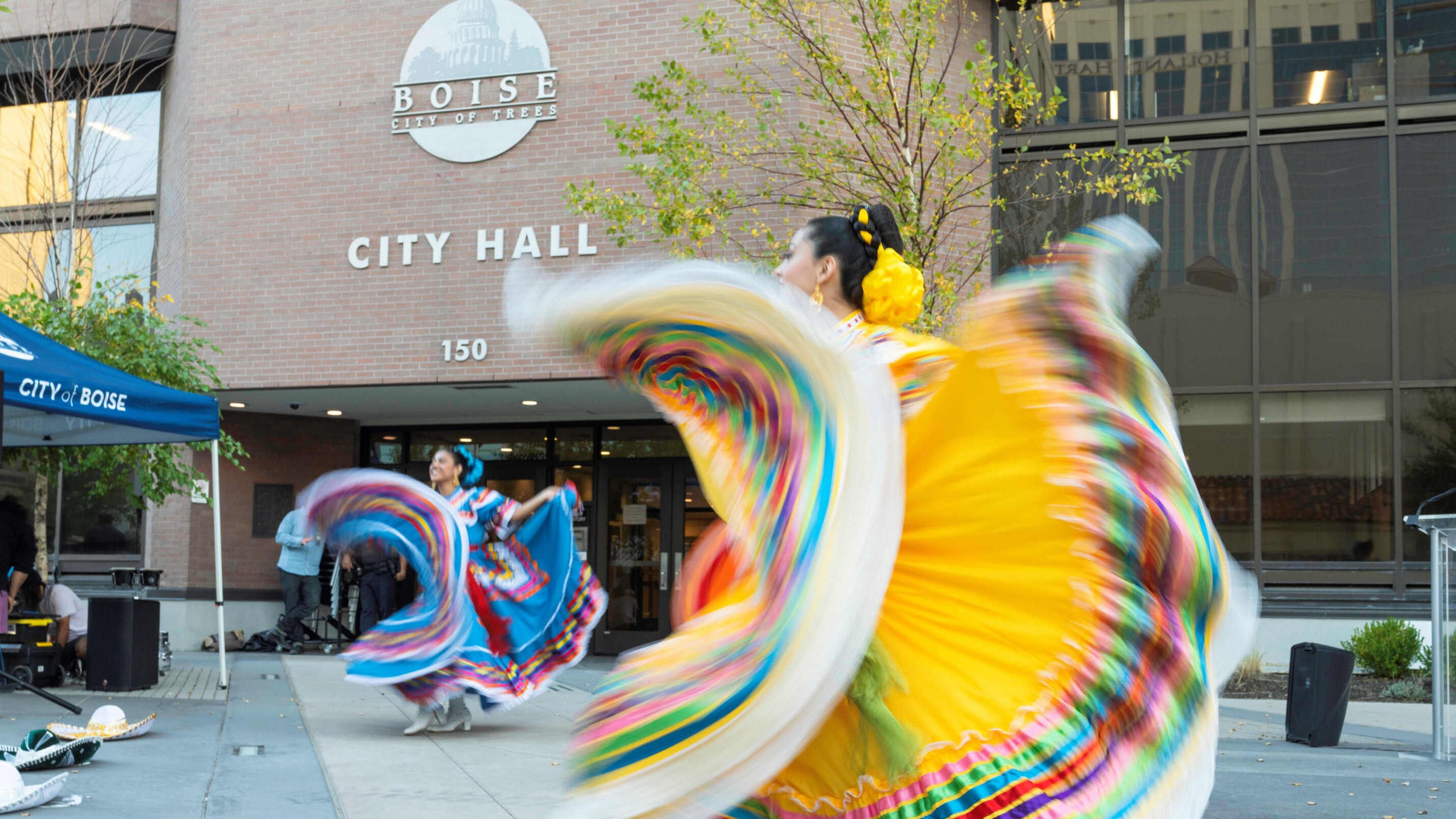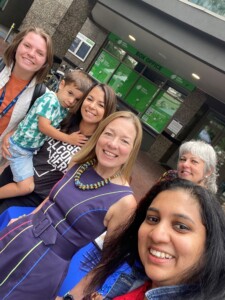
Embracing change: How Boise leans into language access, fostering belonging for all
Boise is the first Certified Welcoming city in Idaho. In September 2023, Boise was officially redesignated as Certified Welcoming following their initial certification in 2019. We spoke with Lana Graybeal, the senior manager of community outreach at the City of Boise, about how the Office of Community Engagement team advances welcoming in the community.
Over decades, and sometimes even years, communities across the U.S. are seeing shifts in their population sizes and demographics. This story is no different for Boise, Idaho.
“We’ve seen the community change and grow, whether it be new immigrants choosing Boise as their home or refugee communities getting resettled,” says Lana Graybeal, the senior manager of community outreach at the City of Boise. “The reality is that our city is going to change, our state is going to change. We can either embrace it or resist it. Our mentality has always been to ensure that everybody who’s here has the opportunity to thrive.”

The Boise Office of Community Engagement celebrates World Refugee Day. Photo courtesy of Lana Graybeal.
Building thriving communities doesn’t happen overnight. Investing in welcoming policies and infrastructure takes time, commitment, and collaboration. That’s where the Boise Office of Community Engagement comes in. Based within the Office of the Mayor, the team works to ensure that everyone in the city has access to city services, programs, and information, regardless of the languages they speak or where they come from.
In Lana’s role, she sets the office’s strategy for working with historically and traditionally underrepresented and underserved communities. This includes refugee and immigrant communities, LGBTQIA+ communities, people experiencing homelessness, low-income residents, BIPOC communities, and aging adults.
“Building a team around this work demonstrates our commitment, even while things are happening around the state or in our neighboring cities,” Lana says. She oversees a team of five, consisting of a community accessibility manager, a constituent services manager, a neighborhood services program manager, a community outreach coordinator, and most recently, a language access program manager.
“We’re hoping we will be a model for other cities, to share the benefits of including and making space for everyone,” shares Lana. “[Certified Welcoming] is another way for us to stand firm in our commitment to creating a city for everyone. All of the steps involved are to really ensure that communities are doing the work that’s necessary to welcome others.”
Strengthening language access
Up until a few years ago, the City of Boise’s language access work was primarily focused on complying with federal language access protocols, including translation and interpretation. One employee in the city’s Human Resources Department was responsible for ensuring compliance with federal and state laws, but the role had limited capacity to build relationships with the immigrant and refugee communities that needed language services the most.
“We were doing bits and pieces,” reflects Lana, but the city, like many other Certified Welcoming communities, wanted to go beyond the basics to strengthen their communication between local government and the multilingual residents of Boise.
At the direction of Boise’s mayor and city council, the city government worked with an outside agency to conduct a community needs assessment. They researched demographics, including languages spoken, and offered recommendations on how to engage and build relationships with different communities in the city.

Residents celebrate Welcoming Week. Photo credit: City of Boise via Facebook.
One of the key takeaways was to hire a language access program manager: someone whose work would be dedicated to establishing meaningful and authentic relationships with communities in the languages that they speak.
The work of the language access program manager has been both internal and external. They work with internal language access liaisons across city government to ensure that each department is consistent, compliant, and streamlined. Most importantly, the manager has dedicated time and resources to go into the community to meet with newcomer residents and let them know that they have a resource within the city that they can trust.
“It’s been a huge asset to the city to have this role,” Lana emphasizes. “Language access is key to our immigrant and refugee community members. The ability to receive information in a preferred language removes so many barriers to access and builds connections to local government. With expanded language access services, residents can feel confident that their city supports them.”
Advancing economic development across communities
Beyond the Office of Community Engagement, other city government leaders are partnering to amplify economic development opportunities for newcomers. For one, Boise has a director of economic development who works closely with the mayor’s economic development advisor to create strategies for all residents to build careers, businesses, and a stronger workforce.
At the start of the COVID-19 pandemic, the city responded to community concerns by creating an economic development task force. A dedicated subgroup was created for refugee and immigrant business owners to share their unique challenges within the local business ecosystem. This helped meet newcomer entrepreneurs’ immediate needs during the crisis, which created a ripple of benefits for the rest of the community.
Lana reflects, “I moved to Boise about 10 years ago, and in 10 years, it’s shifted dramatically in a positive way. We have more immigrant and refugee-owned businesses and restaurants. You go to the farmers market and the variety of foods and produce that you’re able to get is unmatched. That’s because people feel comfortable and safe doing these things; opening a business is a hard thing to do and if you feel unwelcome in a community, you’re not going to take that time to do that.”
Going further, the Boise government called on community members to help determine how to allocate American Rescue Plan funding that the city received. Going out into the city for small-group meetings, the city listened to residents’ feedback on where funding was needed in areas like childcare, mental health services, food security, small business support, and housing.
“Making sure that we’re allocating funding and programming to impact the communities is really powerful,” Lana says. “I think it’s easy day to day to get discouraged sometimes because of what’s happening within the state and country. Seeing these real-life impacts and working with people directly is incredibly rewarding.”
The future of welcoming: Using recertification to guide community goals
With all of the work that Boise already does to welcome newcomers, they are eager to use what they learned from their Certified Welcoming audit to deepen their work.
“We’ve been really intentional about our resettlement of refugees because it’s been a hot topic for so long in the national political sphere,” Lana says. “Recertification was a good reminder that we also need to include our immigrant communities in that conversation and in that work.”
While the needs of refugees and immigrants are often similar, no community is a monolith. The city and its partners in Boise are beginning to realize that each newcomer community needs unique resources and approaches to truly belong in the city.
“I can speak from personal experience: my family arrived as refugees in California in 1990,” Lana shares. “Being resettled, the needs are immediate. Navigating a new language, a new transportation system, the public safety system, housing, shopping for food: those are the day-to-day needs.”
She continues, “I would say the challenge in Boise for immigrant communities is staying rooted in their culture and having a community that supports that. One of the city’s core priorities is being a city for everyone, and this work fits squarely into that.”
The Chinese Exclusion Act, Japanese-American internment, and anti-miscegenation laws are parts of Idaho’s history that continue to impact people from Japanese and Chinese immigrant backgrounds. Many people from these communities have felt disengaged or even left Idaho due to unwelcoming attitudes and policies. According to Lana, the Boise community has work to do to support their cultures in ways that are meaningful and authentic.
The partnerships and team that the city has built throughout the Certified Welcoming process are creating new opportunities to expand and improve their work. “We have a lot of work happening internally to make sure that what we’re doing in the community matches what we’re doing to support our own employees who are also part of these communities,” Lana shares.
“For me, doing this work is really personal and I know firsthand the importance of feeling that sense of belonging,” she says. Lana hopes that recertification affirms the message that refugees and immigrants “have a mayor, city [government], and community partners who really want you to be successful and know that you are welcome here.”